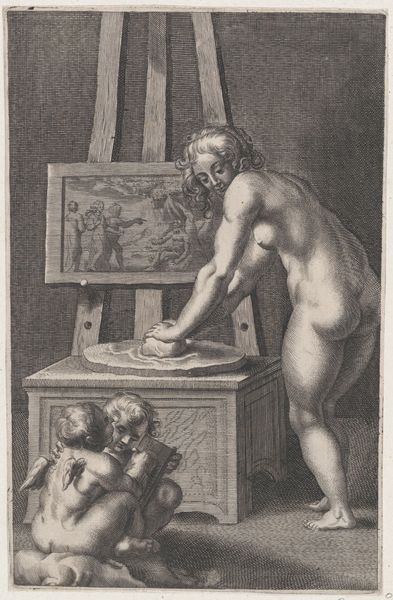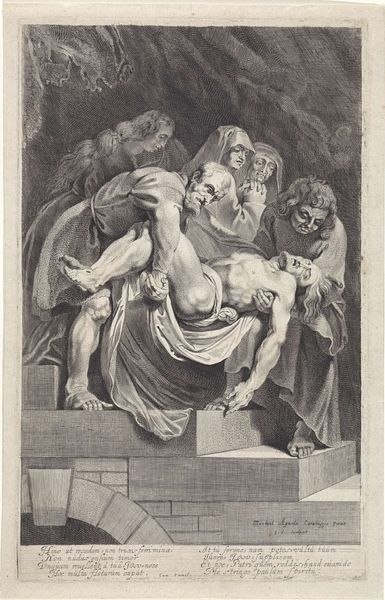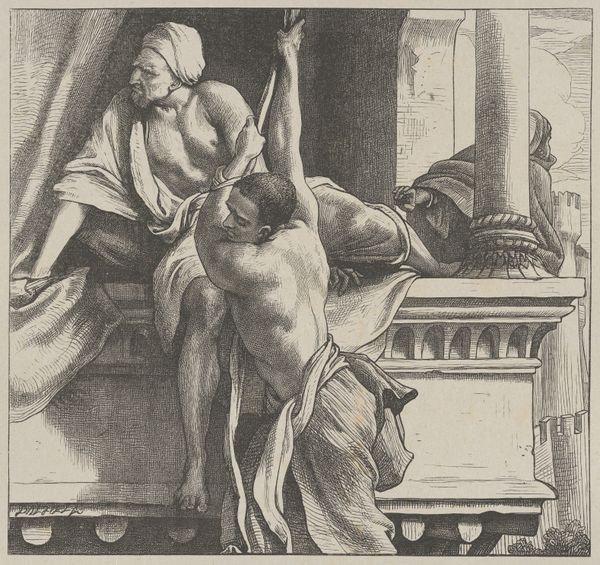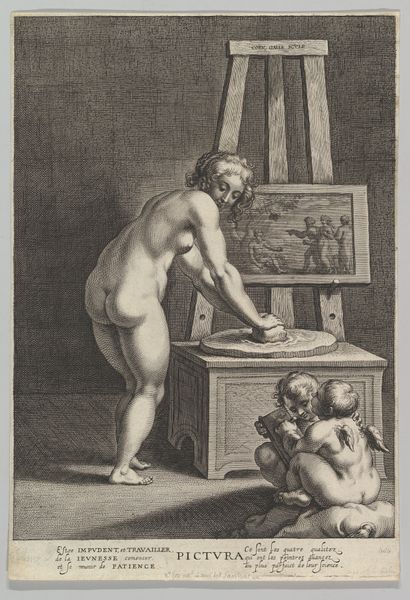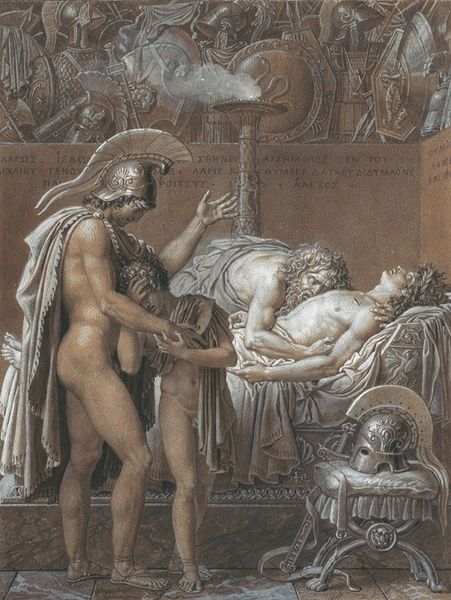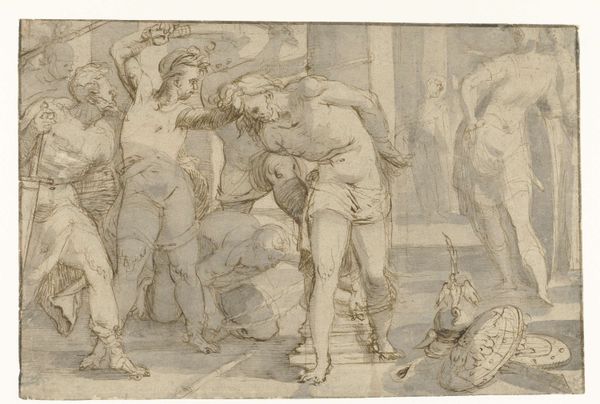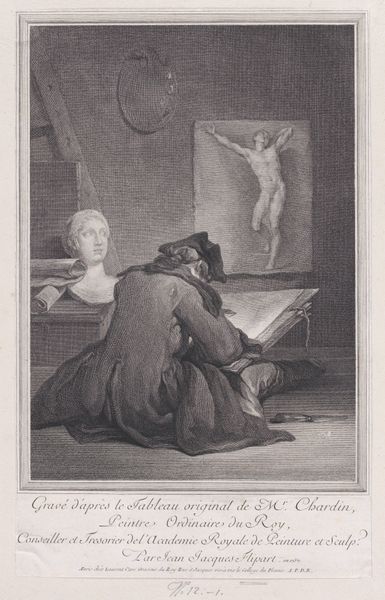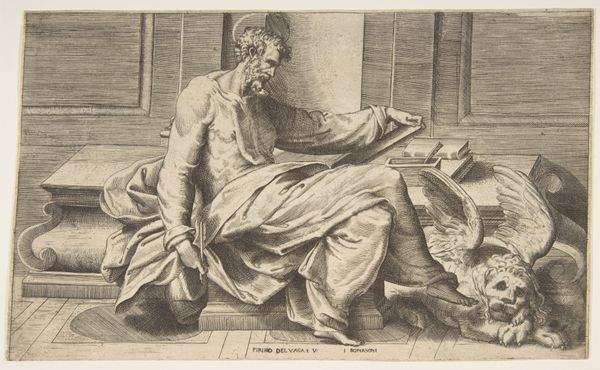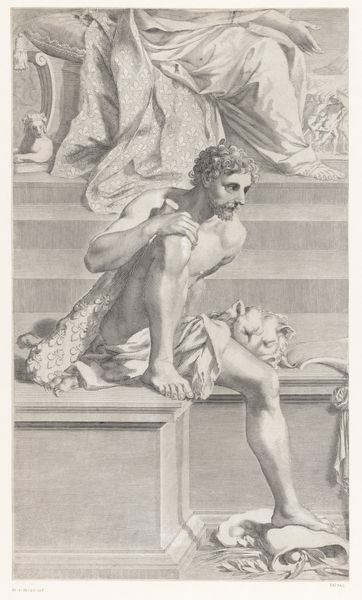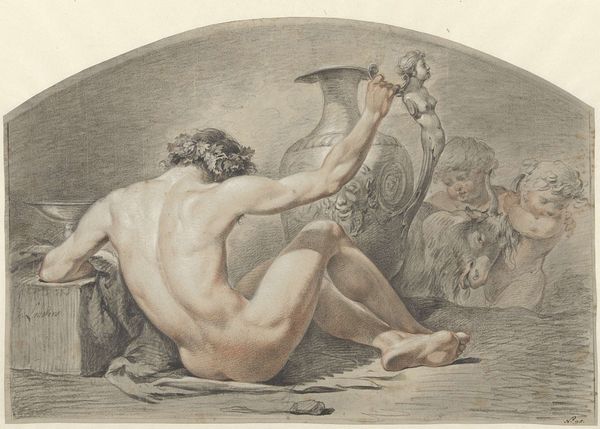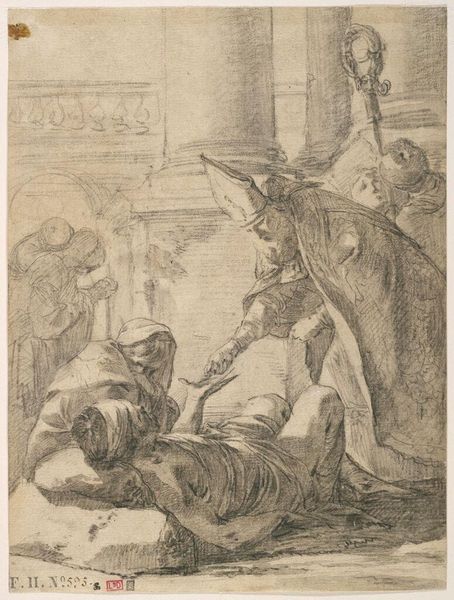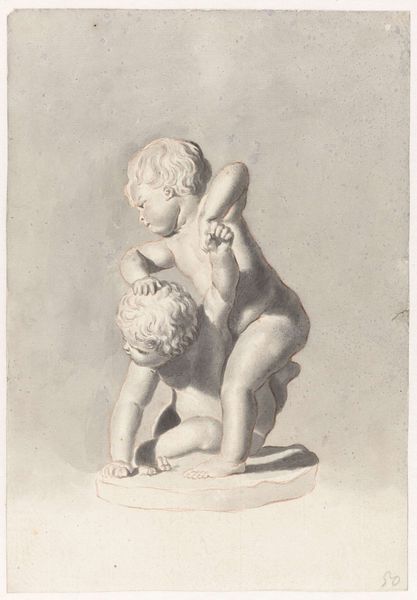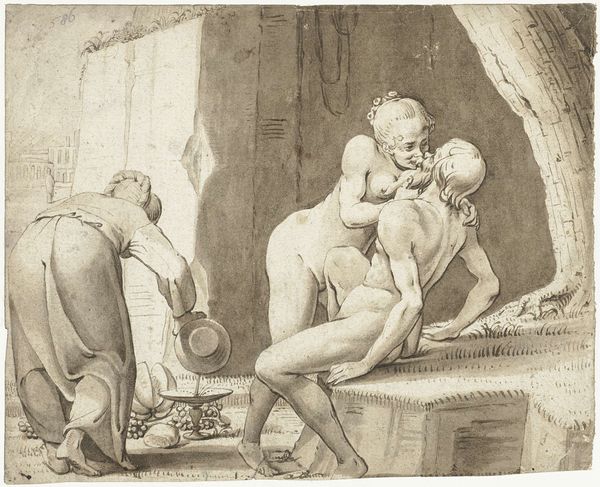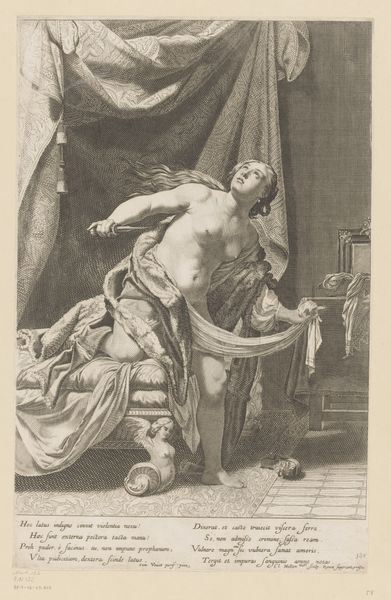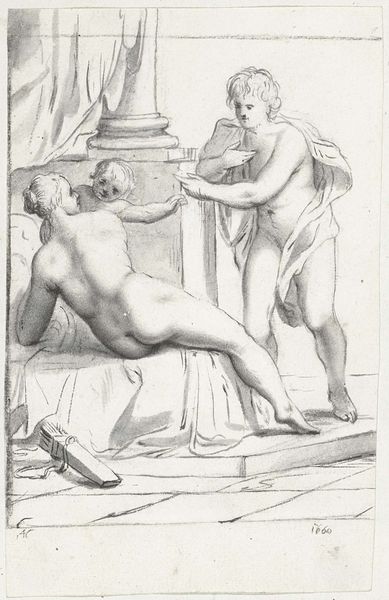
The View of the Plaster Cast Collection at Charlottenborg Palace 1830
0:00
0:00
painting, oil-paint, sculpture
#
painting
#
oil-paint
#
sculpture
#
oil painting
#
sculpture
#
romanticism
#
history-painting
#
academic-art
Copyright: Public domain
Editor: Here we have "The View of the Plaster Cast Collection at Charlottenborg Palace," painted around 1830 by Christen Kobke. It's fascinating—almost like a stage set, a collection of classical fragments bathed in soft light. What leaps out at you? Curator: The tranquility, definitely. The subdued palette, the quiet concentration of the figure… It feels like a moment stolen from history, or perhaps a dream of antiquity. The sculptures themselves, though, are the real story. What do you make of them? Editor: Well, they’re clearly casts, not originals, which gives the scene a sort of…intellectual distance? A copy of a copy. Does that change the way we’re supposed to read it? Curator: Precisely! They're whispers of grand narratives, echoes rather than pronouncements. Consider the act of copying itself: a dedication to an ideal. But the way Kobke presents it... Almost as if these fragmented gods are just another form of landscape, domestic and approachable. Isn’t that the essence of Romanticism, domesticating the sublime? I wonder, what is he cleaning? What do you suppose Kobke hopes to restore or perhaps preserve for future generations? Editor: I never thought of it that way – that it could be a domestic interior with gods simply put in place. He might be touching some art and history, to give respect and reverence. He’s making history alive in the 19th century by restoring ancient beauty through these statues. Curator: See, the light in the room is just exquisite. Kobke truly transports us and captures the Romantic Era’s nostalgia in this beautiful snapshot! Thank you. Editor: Thank you, too. It’s nice to slow down and consider the intention here – beyond just beautiful things on display.
Comments
No comments
Be the first to comment and join the conversation on the ultimate creative platform.
